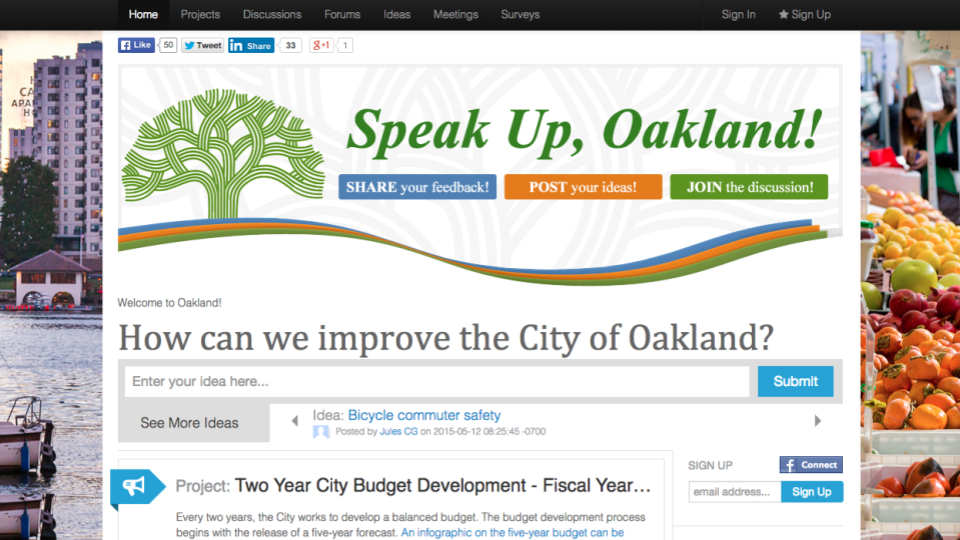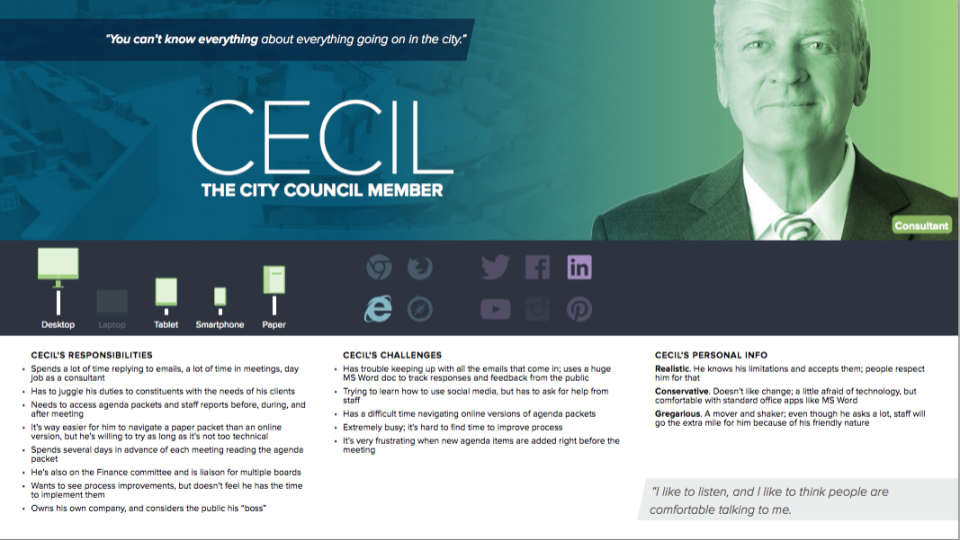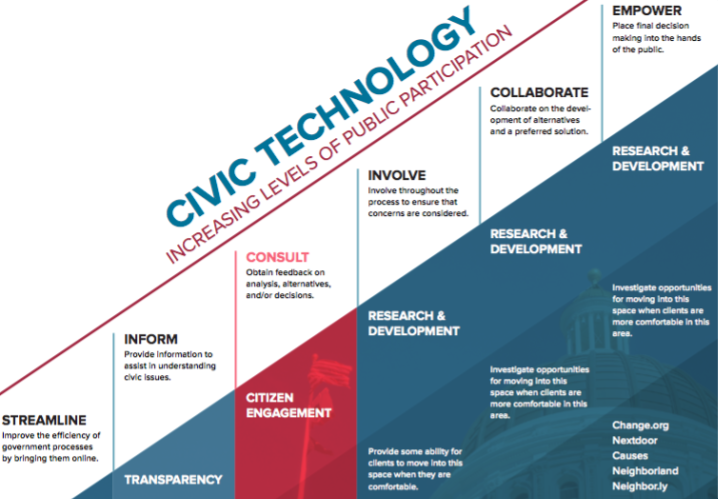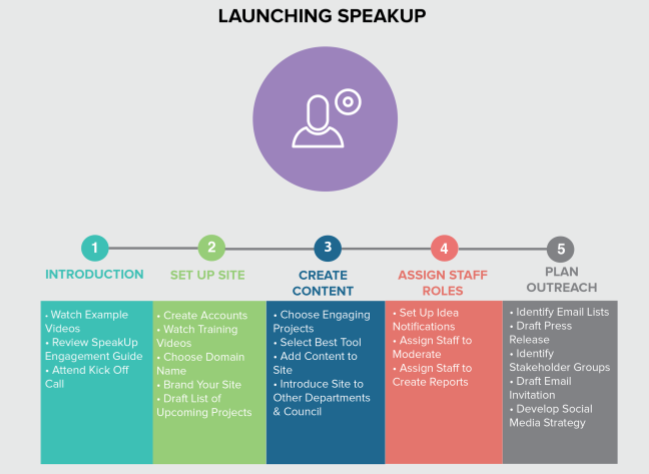

summary
Planning, public works, zoning and several other municipal departments all need to gather input from the public on upcoming civic projects but they usually do not share common tools or approaches to citizen engagement.
SpeakUp was a central portal to invite the public to give input on any project from any department.
Granicus is a civic tech company that provides cloud-based solutions for communications, meeting and agenda management, and digital services that help government see better outcomes and a greater impact for the citizens they serve.
I Led the product development team responsible for citizen engagement digital tools, which are used by over 100 municipalities and state agencies with more than 100,000 citizen users.
Project Role
Product Management, UX Research, Service Design
Project Duration
2 Years
What excites me about civic tech is that we are always trying to push to do something within government that is just on the edge of possible.
Online citizen engagement is one of those areas that is just on the edge of possible. CIOs and City Managers working with Granicus liked the concept of online citizen engagement tools as a way to connect with their communities but they didn’t have a concrete idea of how they were going to connect these new concepts with their existing systems.
Granicus moved quickly to sell these tools but clients immediately ran into problems getting their new engagement portals off the ground. Sites sat silent and clients grew angry with the lack of results.
Granicus didn’t have a clear understanding of why this was happening and brought me in to lead the effort to address these challenges.
user research
I led research into why these engagement sites were failing. I interviewed the government clients and citizen users, analyzed data from the sites, and observed the overall citizen engagement process. I found that governments were purchasing these tools without involving the frontline practitioners who actually needed to gather input from the public.

The result was that governments would use these sites to solicit ideas for improving their cities without a system to internally process these ideas and connect them to people who could consider and work on them. The public in turn saw the sites as a black box where ideas went into a mysterious darkness where they never returned. Even when a real project did appear, public trust in the system was already lost.
communicating a shared vision
We had to craft a way out of this cycle and rebuild trust both with our government clients and their communities. I communicated these findings to our executive team. I had to create a story around these findings to show them that the product itself was not the key failing, so the issue could not be totally addressed with new features alone. Instead we had to partner with our clients to identify a path forward to rebuild credibility that we were taking these issues seriously and were willing to demonstrate that we would work together to layout a path forward.

That path included consolidating our approach to developing, selling, maintaining, and growing these engagement sites. Inside Granicus, our sales, product, and customer care teams were siloed. This meant that sales sold a vision of the tools that didn’t set clients up with the expectations that would lead to their success and customer care didn’t have the proper know-how to address client problems, and product lacked visibility into what issues clients struggled with. As we set out to partner with our clients, I set out to partner with our sales/marketing and customer care teams internally to present a unified vision of where we needed to go as well as a unified approach to helping our clients get there. I also worked with our exec team to add a community manager to work directly under me to help provide services to our clients as well as to prevent these issues from arising with future clients.
This research pointed towards two very important areas: that collaboration was a central part of all of these services, and that users needed a way to clear out old files that were no longer relevant.
partnering with clients
We worked with clients to identify the people and projects within their government who needed input from the public and worked as consultants to train them on online citizen engagement practices and how to use these tools to collaborate with the public on their projects. We learned from clients who were experienced with online engagement and together we created a playbook to share with clients via online guides, email course campaigns, and webinars.

We also connected less experienced clients to ones who had started making progress, so they could learn from their peers. It was tremendously impactful for one urban planner to see how another urban planner in a similar size city used these same tools and practices to connect with their community. It helped reluctant clients to move past seeing engaging the public as an added risk and to start seeing it as something that could help them reduce risk, because it surfaced the problems early enough in the process for them to address them.
As we put our playbook in place, we could incorporate what we learned from our research, increased product usage, and partner with our sales and customer care teams to build technical improvements that would support our approach to online citizen engagement. We found that improving reporting tools were vital to engagement projects where thousands and thousands of residents were discussing civic decisions. I led our product team to develop reports that would help build narratives around what mattered most in these engagements, so that they could be shared with decision makers inside of government and help them to make informed decisions.
I went back to the companies in the competitive analysis to look at common user flows across their sites and mapped them to what I need to create in this project.
outcomes
At this point, our team and partners had created a new cycle. Once, citizens lost trust because they were solicited to give feedback to a black box and now they were being asked to participate in meaningful projects that were actively being decided on by their government where their feedback would truly matter.
Over time, clients began to have more relevant projects, experienced greater participation in terms of both numbers and quality, and more importantly started an internal conversation around building systems to involve the public in civic decisions online.
More Projects